Rabbi Jacqueline Mates-Muchin was in college when someone asked her boyfriend (and now husband) how he would deal with an interfaith marriage. Both partners in the relationship were Jewish, but the questioner made the assumption she was not because she is Asian.
“And that was hurtful,” said Mates-Muchin, the senior rabbi at Oakland’s Temple Sinai since 2015 and the first Chinese American rabbi. “When people focus on how you look, I think that discounts who I am and my knowledge and my feeling of belonging.”

Ilana Kaufman started the Jews of Color Field Building Initiative to train the next generation of leaders. (Photo/Michael Fox)
Jews of color, who make up an ever-increasing slice of the American Jewish population, deal with overt and subtle prejudice on a regular basis.

They are made to feel like outsiders at High Holiday services. They are bombarded with quizzical stares and questions at synagogues. They are underrepresented in leadership roles at mainstream Jewish institutions, from JCCs and Federations to philanthropic organizations.
“Racism has not allowed the Jewish community to understand ourselves as multiracial,” said Ilana Kaufman, who launched the Jews of Color Field Building Initiative last August to address some of the inequities.
“We’ve done an amazing job of excising Jews of color out of the narrative. We’re trained to think they are not Jewish,” said Kaufman, who is preparing for her daughter’s bat mitzvah in April at Congregation Beth El in Berkeley.
Kaufman’s organization is committed to preparing a new generation to step into those Jewish leadership roles throughout the community. It’s the early stages of an effort to make sure Jews of color are represented in ways that reflect their growing numbers, not just in the Bay Area but also nationwide.
The Bay Area-centered organization uses its Facebook page to promote and support the work of Jews of color, such as a Feb. 13 talk at Temple Sinai by Mates-Muchin titled “Chinese and Jewish.” Kaufman also runs webinars to create virtual community for Jews of color, no matter where they live.
The Field Building Initiative — which is supported by the Walter and Elise Haas Fund, the Jim Joseph Foundation, the Leichtag Foundation and the Charles and Lynn Schusterman Family Foundation — also is awarding grants to individuals and entities that are part of the new generation. The first six grants awarded last year went to groups such as Jews in All Hues and the Jewish Multiracial Network, which will use the money to help host the second national Jews of Color Convening in Massachusetts in June.

Paula Pretlow is one of the rare local examples of a Jew of color in a leadership position at a major Jewish institution. The San Francisco resident serves on the boards of San Francisco’s Congregation Emanu-El and the Harry and Jeanette Weinberg Foundation.
“I’m usually the only Jew of color in most rooms that I enter,” said Pretlow, who also serves on the boards of the Kresge Foundation, the San Francisco Symphony and Northwestern University. She believes that will change as more people of color attain prominent positions in high-profile businesses and mainstream Jewish organizations.
She said her certainty about her own sense of belonging insulates her from some of the uncomfortable stares aimed at herself and her fellow Jews of color.

Back when she lived in the East Bay, Pretlow started attending Temple Isaiah in Lafayette, where the rabbi encouraged her to come to services more often. “So I came and sat in the back, and then I challenged myself to move a little farther forward. I didn’t know how I would be accepted. Then I joined a b’nai mitzvah class, so I very quickly found my people. If people thought I didn’t belong there, they never had the guts to say it to me.”
Tonda Case of Oakland, a national board member of the Jewish social justice group Bend the Arc, said she still gets looks that say “What are you doing here?” when she attends Shabbat services while traveling.
“Then comes the question, ‘Oh, are you Jewish? How are you Jewish?’” said Case, who sent both of her daughters to Oakland Hebrew Day School. “Because Jewish looks like white Ashkenazi Jewish to people. The thing is, that’s not what Jewish means. I am not white, I am not Ashkenazi — so am I not Jewish? Am I an interloper? Do I have to depend on your kindness to be able to walk in the door and join Shabbat services? I say, ‘Absolutely not.’”
Despite those challenges, Kaufman said she sees signs of some changing attitudes, in part simply because there are so many more Jews of color today. Intermarriage has increased in recent decades, and along with it the percentage of non-white Jews.
The 2018 Portrait of Bay Area Jewish Life commissioned by the S.F.-based Jewish Community Federation found that 25 percent of local Jewish households include a person who is not white. Among 18- to 34-year-olds, 38 percent of households include a person of color.
The next step in gaining greater acceptance and visibility, Kaufman said, is to get a better idea of how many people identify as Jews of color across the country. She has commissioned such a national survey, to be completed this spring.
A 2015 demographic study by the Steinhardt Social Research Institute at Brandeis University estimated that 11.2 percent of the nation’s 7.16 million Jews were non-white (compared with 35 percent of the general U.S. population).
Kaufman expects there to be a higher percentage of Jews of color in her survey. She points to a recent talk she gave in Phoenix, where she asked the primarily white, Modern Orthodox congregants how many people knew a Jew of color. Many who raised their hands said they had Jewish grandchildren who were not white.
The survey results will allow the Jews of Color Field Building Initiative to push for more leadership roles for Jews of color.

“It is our job to change the paradigm, and the survey will help that happen,” Kaufman said. “Let’s say the survey finds 20 percent are Jews of color — then I’ll tell organizations, I want you to leave 20 percent of your boardroom empty until you can find people of color.”
Case, of Bend the Arc, said when she’s the only Jew of color at a meeting, she thinks about the richness that group is missing.

“As our numbers grow, as the demographics change, it’s really important that [Jewish] leadership changes to reflect that,” Case said. “Otherwise, we are at a disadvantage. In this country and around the world, we have seen what that looks like when people [of color] are not at the table.”
Mates-Muchin said she’s seen progress in synagogues welcoming Jews of color since she was ordained 17 years ago, but that much work remains.
“I think we just have to be open to challenging ourselves and our assumptions, and sometimes recognizing we’re wrong. To be really reflective of who we are and how we might be able to broaden our understanding of who our community is,” she said, “especially when it comes to [our] diversity. We need to be more open about what that means, and the way we talk about things has to be more reflective of the people we are.”
Kaufman said Judaism has to be willing to bend its “Ashkenormative” standards to incorporate more multicultural ideas.
“What do our rabbinical schools need to think about? How do you apply Torah in a multiracial way?” she asked. “Then we start to rethink clergy training school. Then we start to rethink what curriculum looks like in religious schools. We need to make that shift.”
One of the groups Kaufman and others focus on is teenage Jews of color, who often struggle with dueling identities and feelings of not being fully accepted — either by Jews or by people of color. In November, more than a dozen such teens met to share stories and discuss the challenges of being a Jew of color.
One of the workshop leaders was Lindsey Newman, a project manager at S.F.-based Be’chol Lashon, which supports Jews of color as part of its mission of advocating for racial, ethnic and cultural diversity. Be’chol Lashon runs a multicultural Jewish camp each summer at Walker Creek Ranch in West Marin.
Newman said changing demographics and cultural assumptions should allow younger Jews of color to be more comfortable in their own skin than their elders.
“Jews have always been diverse, have always been a multicultural people. I see that as part of our inherent identity and one of our strengths,” Newman said. “But I think in 21st-century America, young Jews — whether they are of color or not — are growing up in a more multicultural world.
“They’re coming to expect that their world will embrace differences in a way that maybe was not true for older generations. For Judaism to be able to stay relevant, we have to celebrate differences that exist, and embrace them.”
Source: “Jews of Color Stake Their Claim to Mainstream Leadership Roles,” Rob Gloster J – The Jewish News of Northern California, January 25, 2019
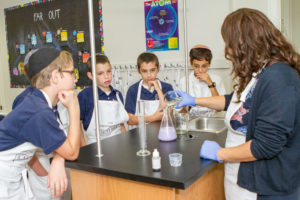 Core to Prizmah’s success—and the success of Jewish day schools, educators, leaders, and students—is the recognition that schools and communities are inherently linked. Together, they form a virtuous cycle, wherein investments in the key aspects of thriving Jewish day schools reinforce and embolden one another. Prizmah supports North American Jewish day schools and communities of all sizes and denominations to tackle the diverse needs and challenges of day schools on their path to success. This vision embraces the passion of schools’ leaders and educators, as well as the educational and philosophical differences of schools, which Prizmah serves according to their individual needs.
Core to Prizmah’s success—and the success of Jewish day schools, educators, leaders, and students—is the recognition that schools and communities are inherently linked. Together, they form a virtuous cycle, wherein investments in the key aspects of thriving Jewish day schools reinforce and embolden one another. Prizmah supports North American Jewish day schools and communities of all sizes and denominations to tackle the diverse needs and challenges of day schools on their path to success. This vision embraces the passion of schools’ leaders and educators, as well as the educational and philosophical differences of schools, which Prizmah serves according to their individual needs.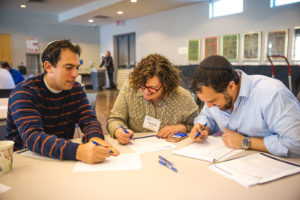 While striving for vibrancy, Jewish day schools also face significant challenges. The changing academic, social, and technological needs of today’s youth create need and opportunity to re-think education—just as the demographics, dynamics, and institutions of Jewish communities are also changing. As the cost of education rises and many incomes stagnate, the struggle to provide an affordable Jewish education to all who want it grows, leading to challenges in enrollment. Prizmah creates the space and environments for days schools to explore these challenges and seek solutions together.
While striving for vibrancy, Jewish day schools also face significant challenges. The changing academic, social, and technological needs of today’s youth create need and opportunity to re-think education—just as the demographics, dynamics, and institutions of Jewish communities are also changing. As the cost of education rises and many incomes stagnate, the struggle to provide an affordable Jewish education to all who want it grows, leading to challenges in enrollment. Prizmah creates the space and environments for days schools to explore these challenges and seek solutions together.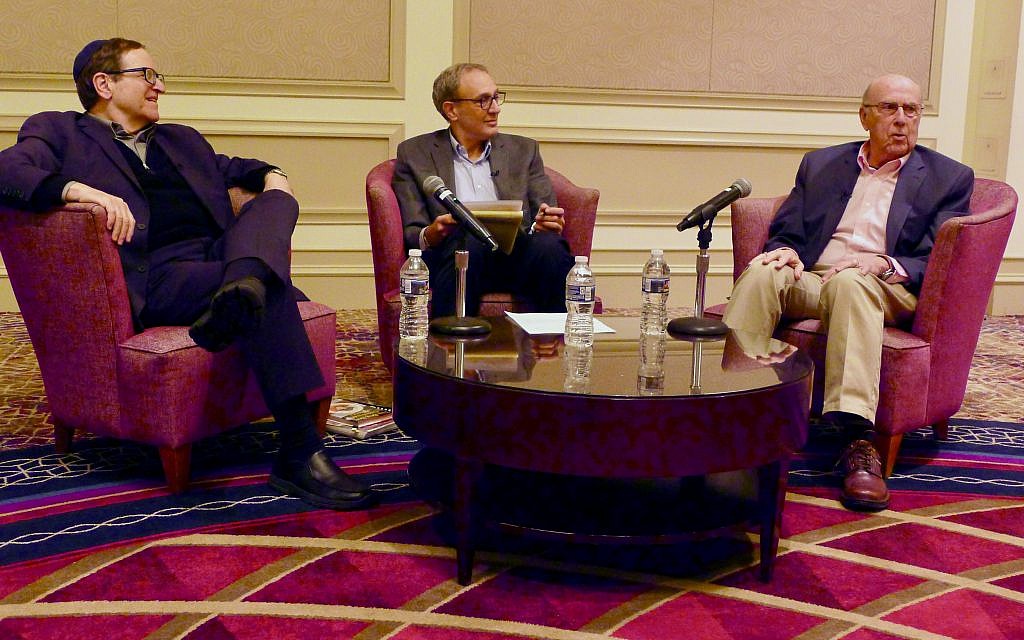
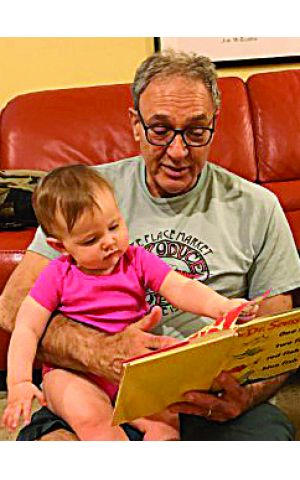


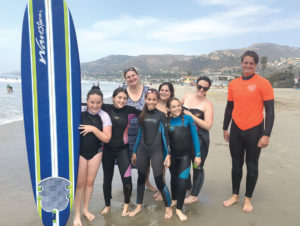 ay leaders, professionals and parents all directly and indirectly impact teen engagement. Especially in their the early teen years, parents require targeted marketing and outreach. Critically, the teen initiatives recognize that parents themselves often seek a supportive community to support their parenting, and many of the initiatives now offer workshops and community-building activities for parents.
ay leaders, professionals and parents all directly and indirectly impact teen engagement. Especially in their the early teen years, parents require targeted marketing and outreach. Critically, the teen initiatives recognize that parents themselves often seek a supportive community to support their parenting, and many of the initiatives now offer workshops and community-building activities for parents.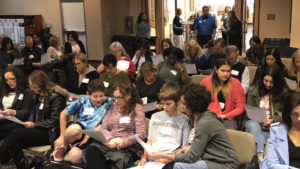 hole teen, including their mental health and overall wellness, is emerging as foundational to effective Jewish teen education and engagement. Several communities offer workshops or conferences on adolescent development and family systems, deeper understanding of the social forces impacting teens today, and specialized training for educators in youth mental health first aid. By addressing and elevating teen wellness, Funder Collaborative communities are pioneering a new, holistic view of engagement work, with healthy, balanced and resilient teens at the center.
hole teen, including their mental health and overall wellness, is emerging as foundational to effective Jewish teen education and engagement. Several communities offer workshops or conferences on adolescent development and family systems, deeper understanding of the social forces impacting teens today, and specialized training for educators in youth mental health first aid. By addressing and elevating teen wellness, Funder Collaborative communities are pioneering a new, holistic view of engagement work, with healthy, balanced and resilient teens at the center.